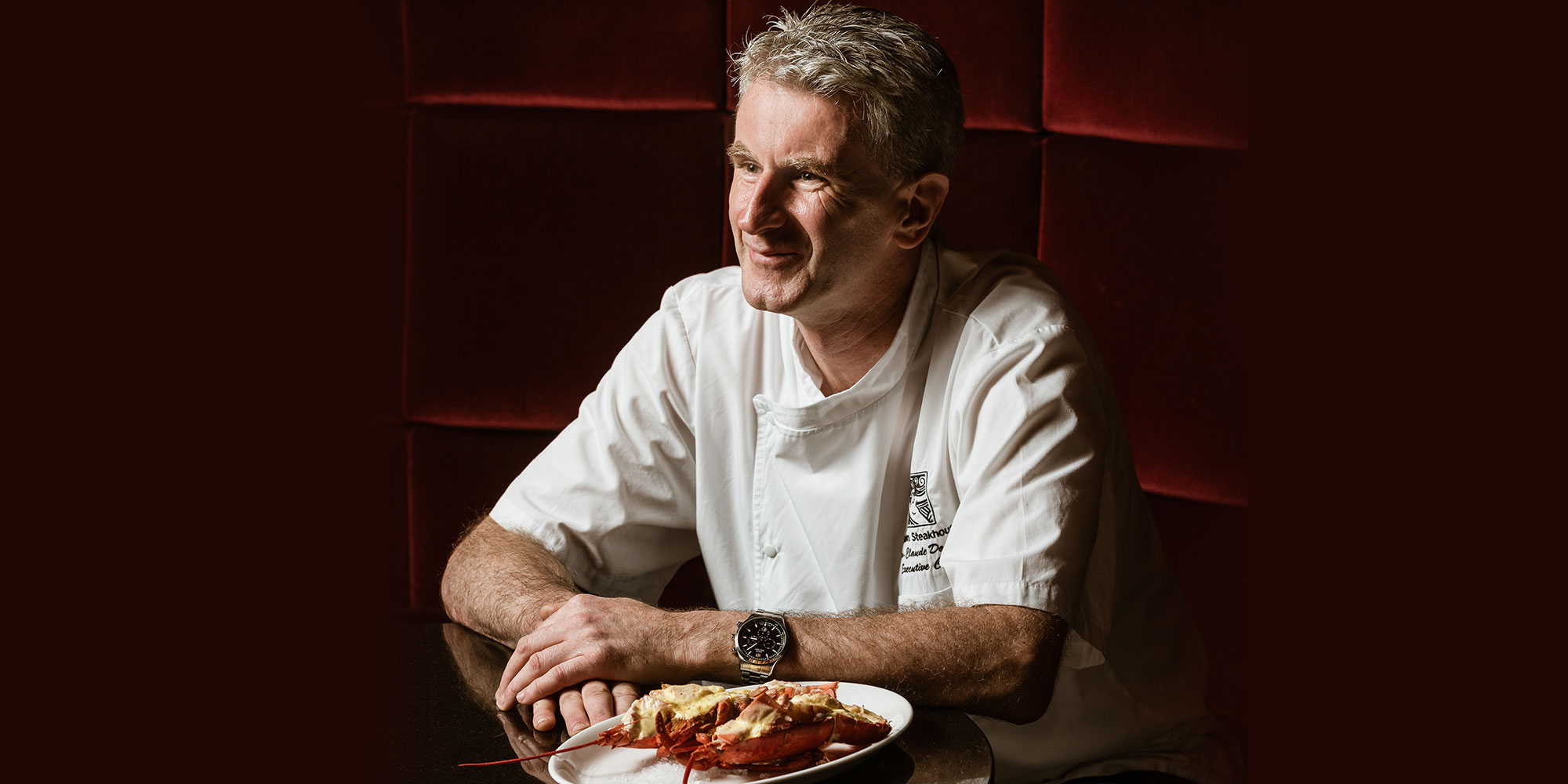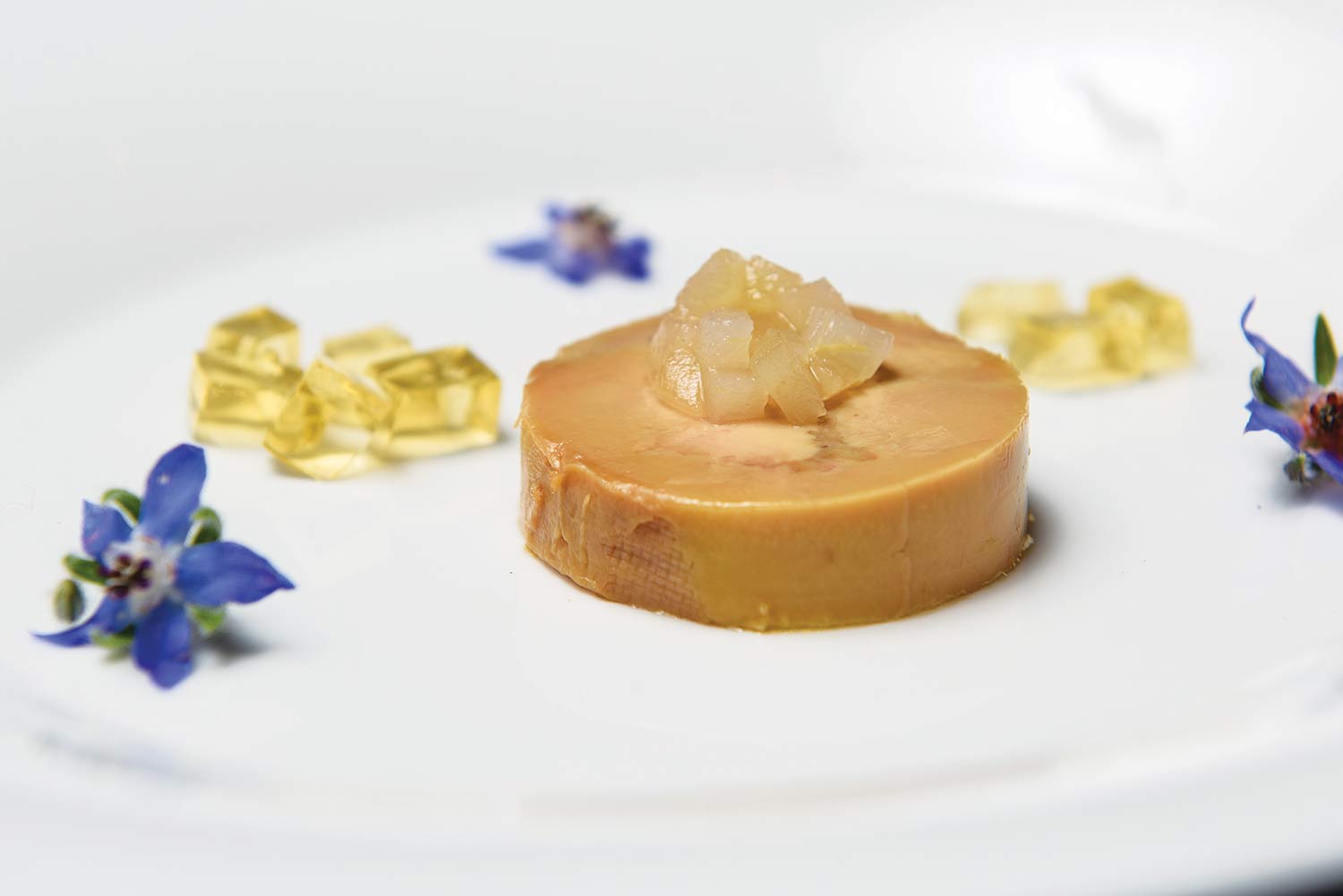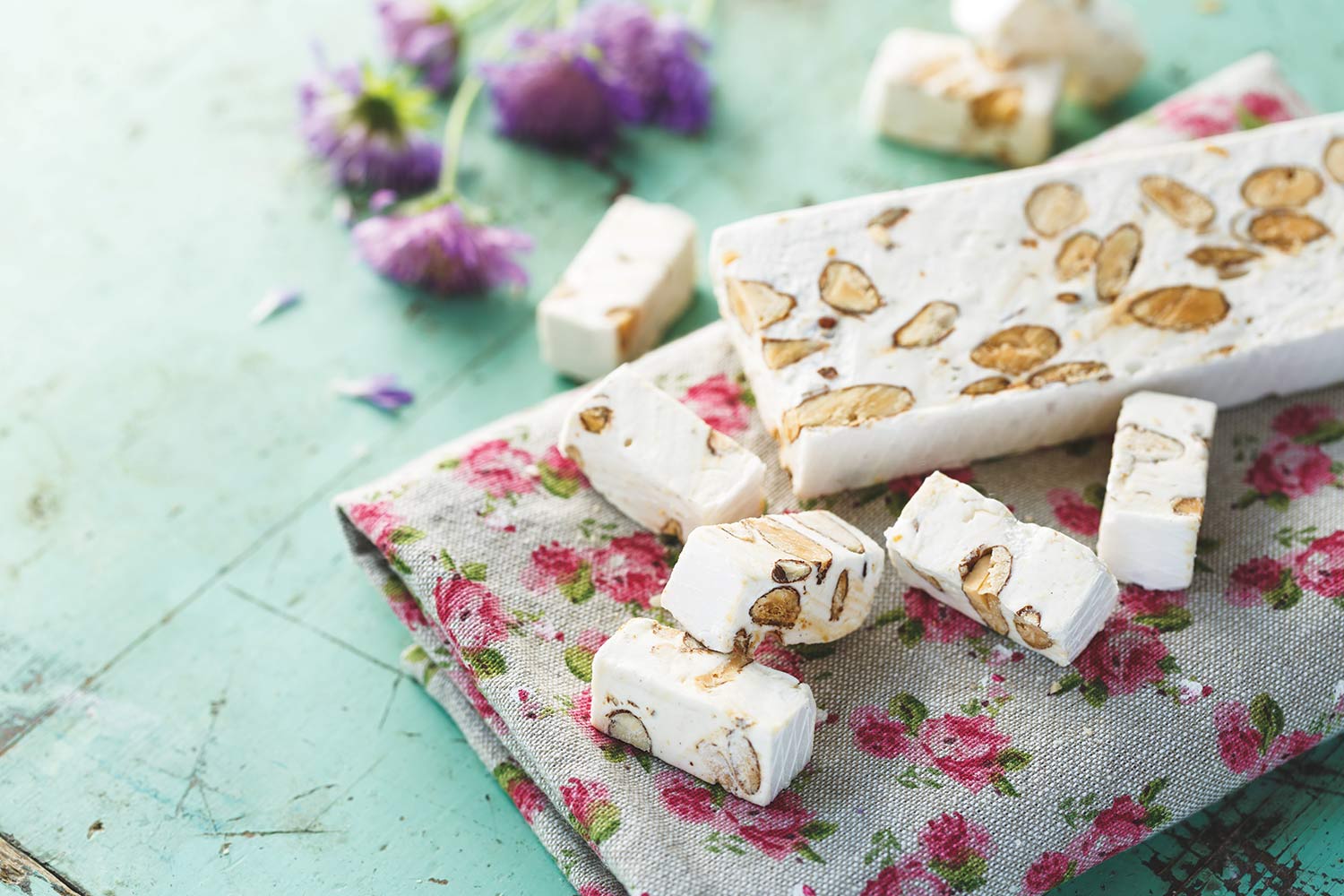
Refined Atlantic Lobster Recipe from Chef Jean Douguet
Joining his two passions, chef Jean Douguet travels the world sharing special French holiday recipes
- Text by J.H. White
French chef Jean Claude Douguet, the executive chef of Vancouver’s popular steakhouse Gotham, has travelled and worked around the world, and he always brings his heritage with him, especially during the Christmas holiday.
When he’s cooking at home for friends and family, his traditional Christmas dinner menu is quite different from what you’d expect in North America.
Celebrating Brittany’s Rich Culinary Heritage
Douguet is from Saint-Brieuc, Brittany, a small coastal city in northwest France. “Traditional Christmas in France, really traditional, that’s oysters, smoked salmon, champagne, of course … [and] a type of chicken we call chapon,” he says. Chapon is from Bresse, near the Alps in southeast France; it’s a favourite of three-star Michelin restaurants. Douguet prefers them to the larger turkeys prepared for Christmas in North America, but you won’t find chapon in Vancouver since they can’t be exported to Canada.

While oysters and chapon won’t work at his steakhouse, Douguet does offer his signature foie gras dish during the holiday at Gotham, cooked in a Hollandaise, Béchamel, or Béarnaise base, lathered in a peppercorn sauce.
From Explorer to Culinary Artist
Douguet says his passion for the culinary arts stems from “the people, and creating—the creation, discovering, learning.”
Douguet’s first love, interestingly, was travel. Throughout his career, he’s been able to combine his zest for food with travel, exploring France. It’s allowed him to discover each region’s specialty dishes and to learn what’s served during the holiday season.

Provence, for example, a historical province of southeastern France, is famed for its Christmas desserts. In the south of Provence, you have the traditional lei tretze dessèrts de Noel or “the thirteen desserts of Christmas,” rooted in the Catholic faith. The thirteen desserts represent Jesus and his 12 apostles.
“When you go to church before midnight or sometime after, you have 13 types of desserts, and you go by order,” he says. “Some are fruits, dry fruits, nougat. There is some kind of sweet bread, calissons, all the specialty sweets from the south of France.”
“It’s been a while since I left Brittany, but I’m still attached to the food from there,” he says. Serving some of his hometown favourites at Gotham works well because the climate is similar.

During the winter, Vancouver, like Brittany, gets “a lot of rain,” he says. To stay warm, he likes to prepare a fish soup for himself, and occasionally for his restaurant.
“The soup is really rich; it’s kind of thick, and we serve with garlic crostini, some sauce, and a lot of cheese on it. That’s why I’m really attached to that. It’s not fancy at all, but it’s a dish I really enjoy.”
Douguet’s Favourite Recipe
For the holiday, Douguet shares with us a favourite recipe of one of his favourite types of food, lobster.
“I love lobster,” he says with a smile.

Atlantic Lobster, Champagne Sabayon
4 lobsters (3/4 to 1 pound each)
4 quarts court-bouillon
2 ounces butter
4 teaspoon olive oil
2 tablespoons chopped fresh tarragon
For the court-bouillon
4 quarts water
1 tablespoon coarse salt
1 quartered onion
1 tablespoon dried fennel seeds
1 tablespoon whole black peppercorns
4 bay leaves
1 lemon, halved and squeezed
For the sabayon
1 cup champagne
4 egg yolks
3 ounces clarified butter
Juice of half a lemon
Salt and Espelette pepper
Bring water to a boil, add salt, onion, fennel seeds, peppercorns, bay leaves, and lemon (including the peel).
Reduce heat and simmer 15 to 20 minutes.
Cook lobsters in the court-bouillon, 3 minutes for the tails and 6 for the claws. When cooked, split the lobster lengthwise from head to body. Shell them all, making sure to remove all cartilage. Reserve the clean shells for presentation.
Slice each lobster tail into five medallions. Toss them in a pan with butter, olive oil, and chopped tarragon. Add the claw meat.
Spoon the lobster meat back into the shells, putting the claw meat in the head. Season with freshly ground pepper.
Preparing the sabayon
In a medium-size mixing bowl, place egg yolks and half a cup of champagne.
Cook sabayon over low heat or over a bainmarie, whisking constantly for several minutes, careful not to let it sit or get too hot, or you’ll end up with scrambled eggs. A good sabayon should be smooth, frothy, and free of lumps.
The mixture will take form and turn pale. Continue whisking as it thickens. When it’s done, trails will appear at the bottom of the bowl when whisking. Remove from heat, season with salt and Espelette pepper, and slowly incorporate the clarified butter and the remaining half cup of the champagne.
Before serving, set your oven to broil.
Place your lobsters on a baking sheet, carefully spoon the sabayon over the lobster, making sure it doesn’t overflow.
Place the baking sheet in the oven fora few minutes to obtain a gratin effect,keeping an eye on it, as the sabayon can burn very easily. Remove from the oven when the surface is a light brown.
Serve immediately.










